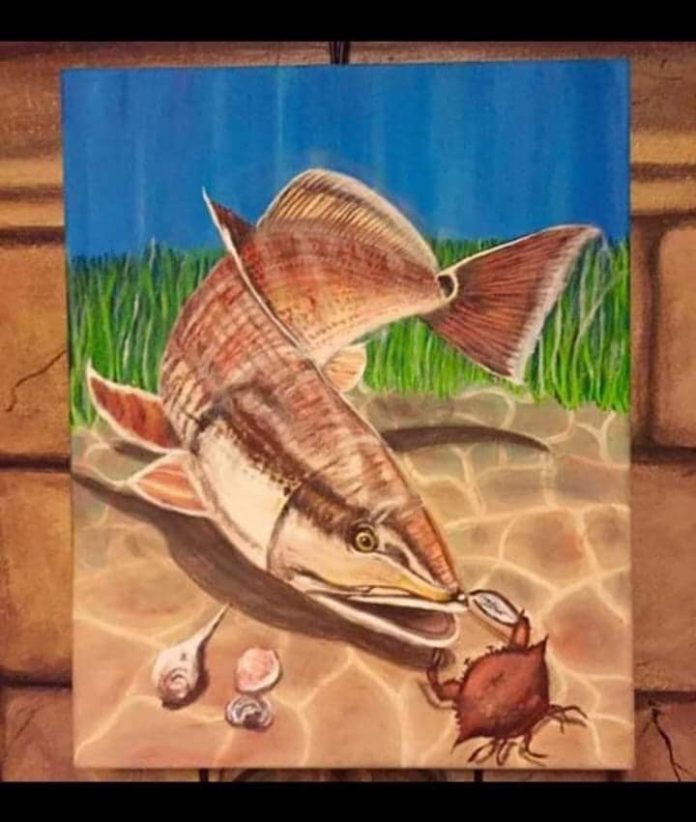By FRANK SARGEANT fsargean@tampabay.rr.com
Published: Aug 22, 2003
Fish that tell you where they are? It’s an angler’s dream, but for Carole Neidig of Mote Marine Labs, it’s also the reality of a new study in the Alafia River, on the east shore of Tampa Bay. Neidig and scientists from Florida Marine Research Institute in St. Petersburg placed tiny transponders in the body cavities of dozens of hatchery-spawned redfish. The reds were released into the river and, with the help of sonar sensing gear, their movements can be tracked from hundreds of yards away. The senders release a measured series of electronic pings, allowing researchers to track them and identify which fish they’re tracking. The units are expected to last about six months. Neidig said the fish experience no ill effect from the senders, which are surgically inserted into the abdomens. “The aim is to see where young redfish live and migrate when they’re in their first and second years,” Neidig said. She said the stocked fish range from 7 to 12 inches long. The fish were stocked between the mouth of the river and U.S. 301, a distance of about 4 miles. “We know that fish this size generally like moderate salinity,” Neidig said. “The river recently has had salinities between about 17 parts per thousand at the mouth and as little as .1 parts per thousand upstream after the big rains, so it will be interesting to see if they move toward a particular salinity level.” She said availability of food also will affect movements of the fish. Wherever they go, the pole-mounted sensors directed by FMRI scientist Dan Roberts will search them out. “We can hear them if they go behind a dock, but if they get into thick weeds the signal can be tough to pick up,” Roberts said. He said the sound coming from anglers’ fish-finders also can confuse the tracking system. A series of four fixed stations downriver will record any of the fish that migrate out of the river and do not return, Roberts said. Neidig said the young fish are expected to join other non-tagged fish, including fish from the Port Manatee hatchery and wild stocks, revealing the habitat the young prefer at various times of year. She said partial funding for the project came from the Pinellas County Environmental Foundation and the National Fish and Wildlife Foundation through fundraisers such as the annual Spring on the Flats tournament in St. Petersburg. Neidig said the tags cost about $250 each, so she’s hoping most of the released fish will survive to provide a full six months of data. “We particularly want fishermen to be aware of these fish and let them go right away if they catch them,” Neidig said. She said a thin orange tag in the back identifies each sonic-tagged fish. Neidig said natural predation might be unavoidable for some of the fish, but because they’re relatively large, most should escape being eaten. “We had a porpoise hunting on a dock where we had two fish stocked, and their units quit sending, so I thought they had been eaten,” Neidig said. “But a little later they showed up again, so I guess they went back and hid in the weeds until the porpoise left.” The program is part of the continuing redfish stocking project initiated on Tampa Bay several years ago. Scientists are studying the cost efficiency of releasing hatchery-spawned reds at various sizes. Millions of young fish have been released along the east shore of the bay in the past several years. Adult reds spend most of their lives offshore, the scientists said, but return to large bays and passes in late summer and fall to spawn. The young reds work their way far into coastal creeks, ditches and mangrove marshes, where they spend their first year safe from the voracious predators of the flats. But it’s thought that on Tampa Bay, the destruction of much of this shallow habitat has cut back on survival of the baby reds, creating a bottleneck in reproduction that might be bypassed by heavy stocking of hatchery-spawned fish. The fish most sought by flats anglers – from 18 to 27 inches long – are typically 18 months to 4 years old. At age 4 to 5, the reds move offshore to join adult schools, returning inshore only during the annual spawn. Unfortunately, none of the adults will be wearing sonic tags to tell anglers where they’re located. However, the information gleaned from the Mote study might be another useful piece in the rebuilding of Tampa Bay’s redfish stocks.
- Jay Mastry - March 26, 2024
- Captains Corner, Gorta - March 23, 2024
- Dave Zalewski - March 12, 2024











